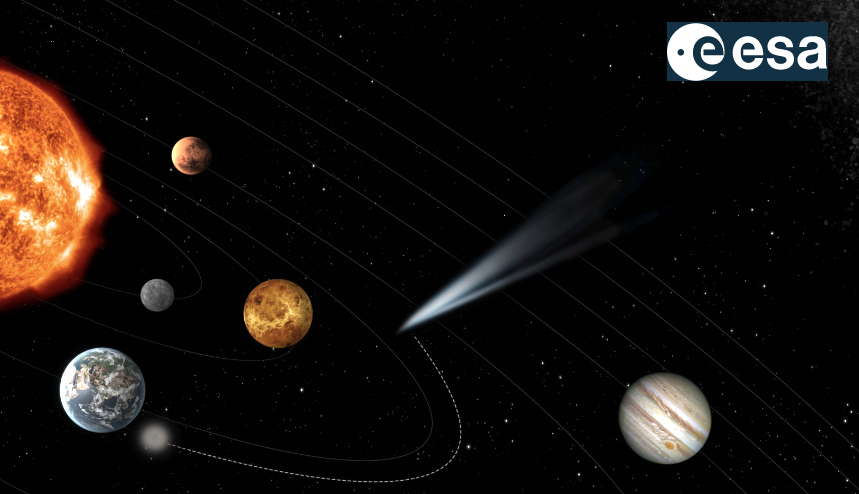
ESA and OHB have signed a contract to move forward with the design and construction of ESA’s ambitious Comet Interceptor spacecraft, planned for launch in 2029.

Unlike other missions, Comet Interceptor’s target has not yet been discovered. That’s because it would take too long to build a mission on the short timeframe of a potential target entering the Solar System for a spacecraft to reach in time. Instead, Comet Interceptor will be ready and, unless a suitable target is identified before launch, waiting 1.5 million km ‘behind’ Earth as viewed from the Sun (at the gravitationally stable Lagrange point 2) for a suitable comet or even an interstellar object to enter the inner Solar System for the first time.

Perhaps hailing from the vast Oort Cloud of comets that surround the Solar System, Comet Interceptor’s target will not have undergone the same ‘processing’ as comets on shorter orbits such as those visited by ESA’s pioneering Giotto and Rosetta missions. As such the target may contain precious material surviving from the time when the Sun and planets formed 4.6 billion years ago. Kuiper Belt and Oort Cloud in context Kuiper Belt and Oort Cloud in context
Once a suitable comet or instellar object is identified, Comet Interceptor will be deployed from its parking orbit to intersect its trajectory. The mission comprises three modules: a main spacecraft and two probes. They will separate several days prior to intercepting the comet to perform simultaneous observations from multiple angles, creating an exceptional 3D profile of the comet or interstellar object. Construction contract for Comet Interceptor signed Construction contract for Comet Interceptor signed
ESA is leading the development of the main spacecraft and one of the probes, both carrying different but complementary instruments built by European scientific institutes and industry. JAXA, the Japan Aerospace Exploration Agency, is providing the other probe and its instruments.
Comet Interceptor was proposed to ESA in July 2018 and selected in June 2019 and is an example of a ‘fast’ development, or F-class mission. Comet Interceptor is foreseen for launch as co-passenger with ESA’s exoplanet-studying Ariel spacecraft in 2029.
“Comet Interceptor’s ground-breaking aims include characterizing the surface composition, shape and structure of a pristine comet for the first time ever and sampling the composition of its gas and dust coma,” said Michael Kueppers, ESA’s Comet Interceptor study scientist. “Having access to this material is vital for understanding our origins, in terms of how our Solar System formed and evolved over time.”
“Comet Interceptor is an ambitious mission that requires a unique spacecraft – three novel spacecraft in fact – and after an intensive study and planning phase we are ready to start building the European elements,” said Nicola Rando, ESA’s Comet Interceptor project manager.
“European scientists, engineers and flight operators are set to strengthen their positions as leaders in all aspects of cometary exploration as we take this important step in building ESA’s next iconic comet mission,” said ESA Director of Science, Günther Hasinger.
